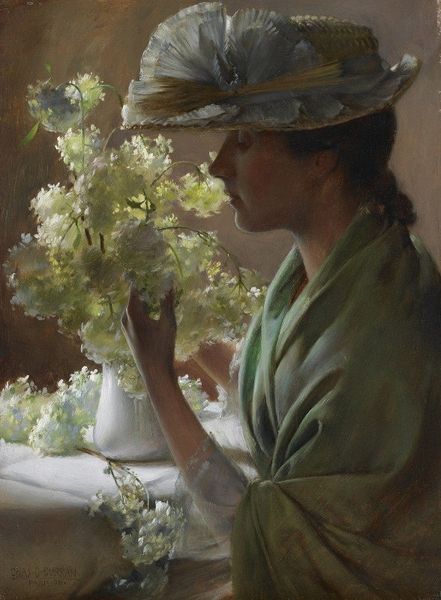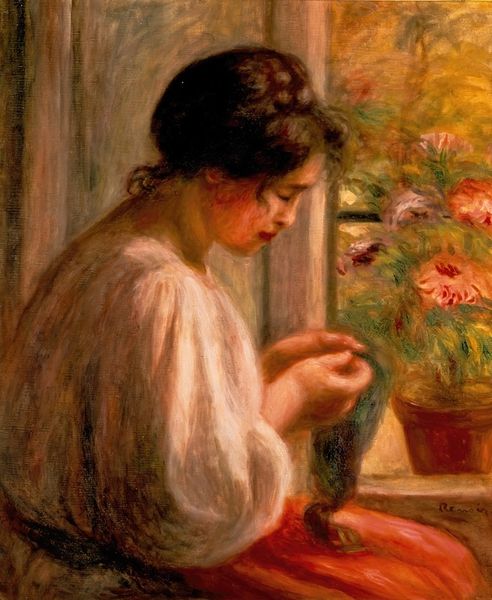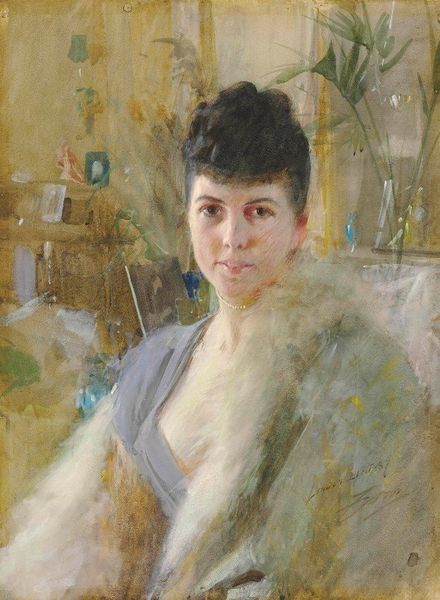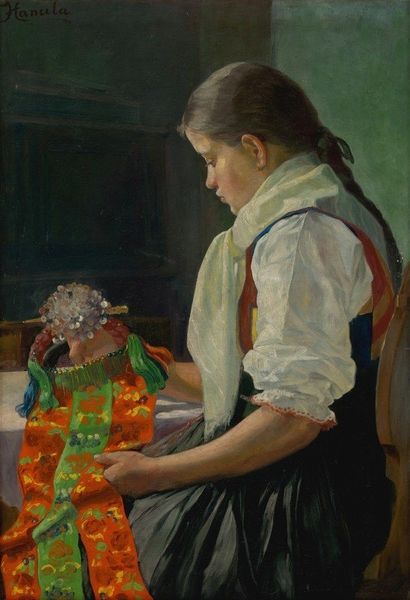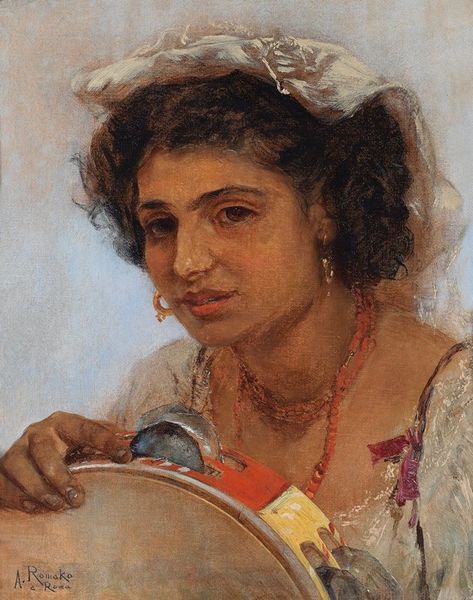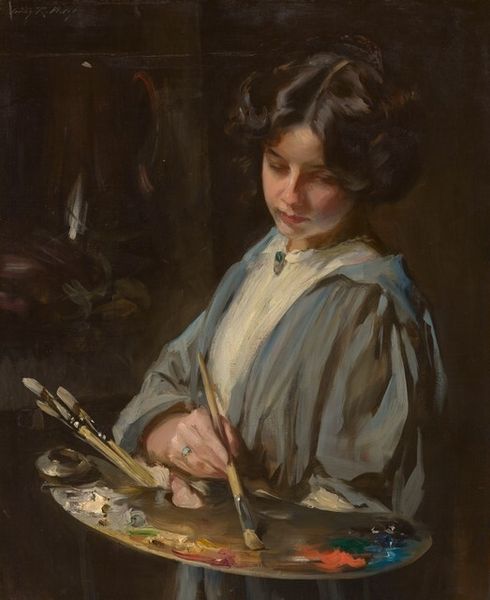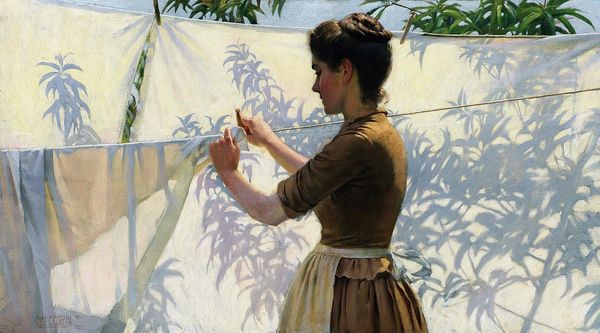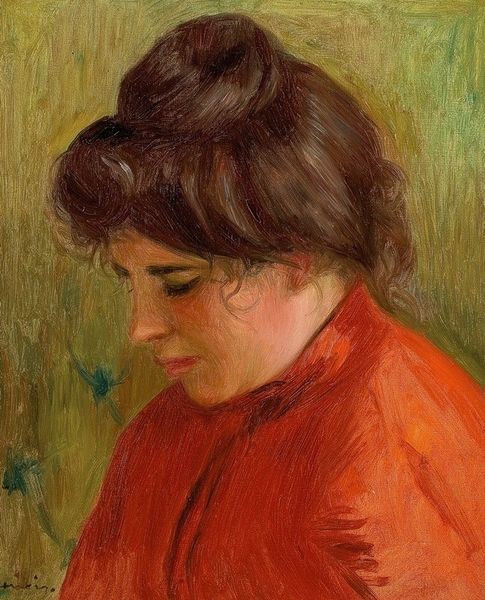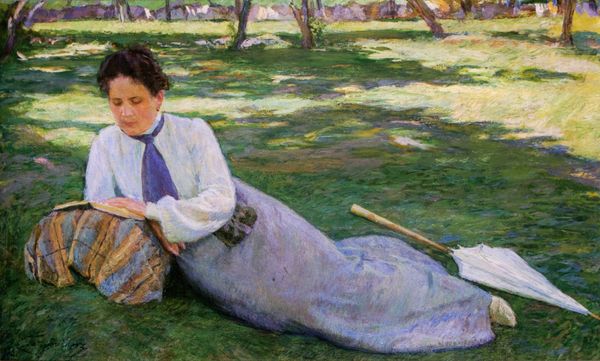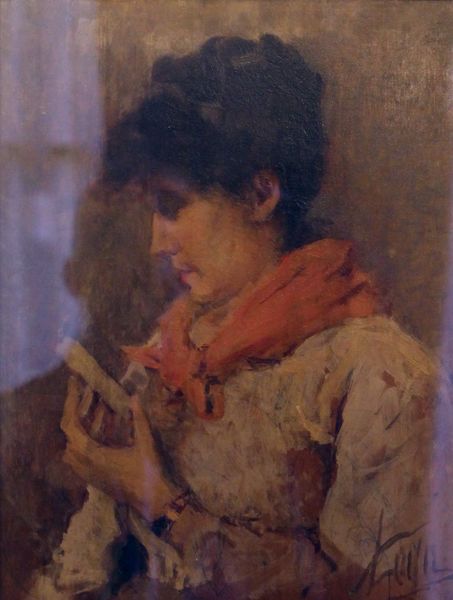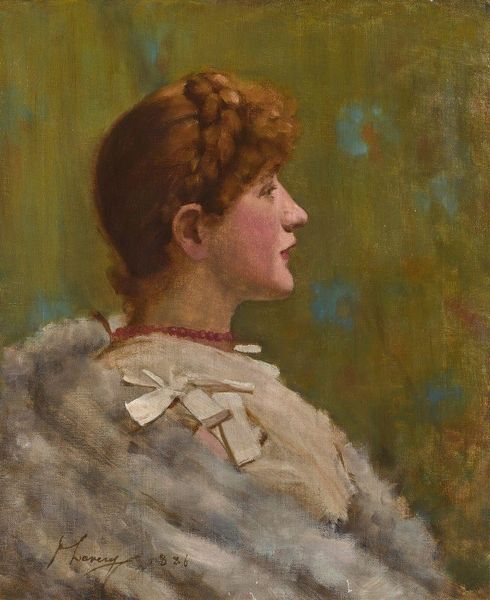
Copyright: Public Domain: Artvee
Curator: Looking at Charles Courtney Curran's painting "Shucking Corn," created in 1891, what first captures your attention? Editor: The domestic intimacy is palpable, and almost melancholic. The single female figure, bathed in soft light while husking corn—it speaks to repetitive, often unseen labor, but also perhaps of connection to the land. Curator: Absolutely. And we must recognize the intersectional framework inherent here: class, gender, and race are undeniably interwoven. Curran's portrayal asks us to consider who performs this labor, under what conditions, and what societal structures perpetuate these roles. Editor: I see a connection too, albeit subtler, to older symbols of harvest and abundance. Corn, throughout various cultures, appears as an ancient signifier of the provision from the earth; husking itself is like revealing a secret or promise. There's that potent blend of everyday task with ancient resonance. Curator: You highlight a key aspect: this seemingly simple task carries centuries of baggage! What does it mean to depict it, and specifically to foreground this young woman? It speaks to broader narratives around the idealization of rural life, but also to the very real and often unacknowledged work sustaining those ideals. What meanings get obscured, even romanticized? Editor: Do you think, though, that her isolation emphasizes the individual versus any larger social critique? Note how the details soften toward the window; only the central act remains in focus, drawing us into that singular moment, like a contemporary version of a timeless madonna-like image centered around nurturing? Curator: Interesting point! Yet even individual experience exists within a larger matrix. Her solitary act, visualized through a post-Impressionist lens, speaks to evolving notions of femininity, and the liminal space she occupies as labor, identity, and societal expectations converge. This makes "Shucking Corn" a document reflecting complex transitions underway. Editor: These shifting cultural interpretations over time—from immediate scene to layered, symbolic representation—ultimately enrich and change the piece's significance across generations. Curator: Indeed, and by unearthing these layers, the painting becomes far more complex. We uncover stories interwoven across culture, personal reflection, and collective memory.
Comments
No comments
Be the first to comment and join the conversation on the ultimate creative platform.
